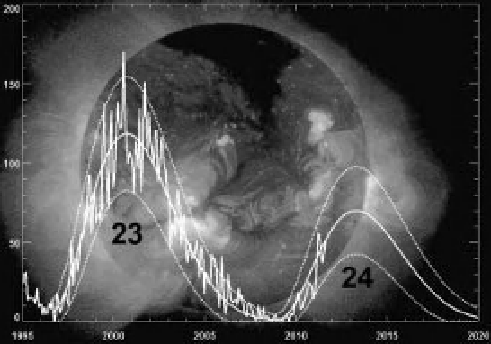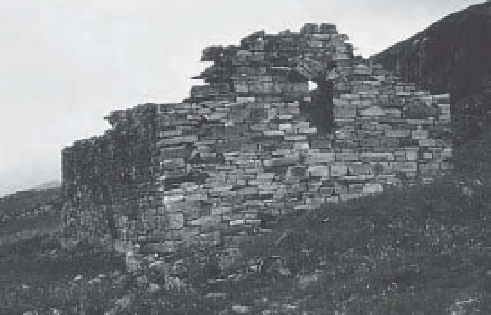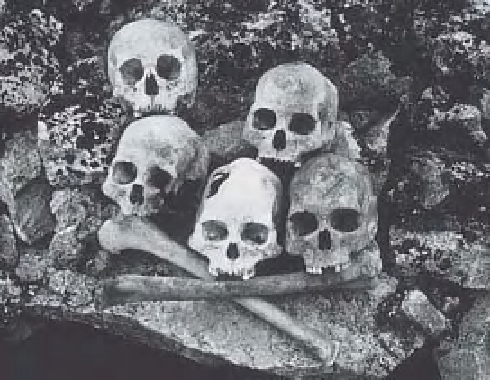Geoscience Reference
In-Depth Information
A
B
Figure 8-22.
Recent solar activity during sunspot cycle
23 and a prediction for cycle 24 (see Color Plate 8-22).
Adapted from Hathaway (2011).
<
http://solarscience.
msfc.nasa.gov/SunspotCycle.shtml
>
behind schedule (Fig. 8-22). The next sunspot
cycle is forecast to reach a level much lower
than the 2000 peak, and if this comes to pass it
will have a signii cant impact on world climate
(NASA 2011b). In fact, some scientists are now
forecasting the possibility of signii cant global
cooling by the mid-twenty-i rst century.
The so-called Little Ice Age (
c
.
AD
1200-1900)
was most likely a consequence of prolonged
lows in solar activity. Sunspots all but disap-
peared during the Maunder minimum, 1645-
1715 (Eddy 1977). Several independent lines of
evidence support the existence of this interval
of reduced solar output (Le Roy Ladurie 1971,
2004), and global cooling was reinforced by
numerous volcanic eruptions (Nesje and Dahl
2000). The net result was global climatic cooling
on the order of 1-2 °C (Grove 1988), which is
documented worldwide from the Pacii c islands
(Cook et al. 1991; Nunn 2003), to the tropical
Andes (Thompson et al. 1986), to western
Canada (Campbell et al. 1998), to Greenland
(Fig. 8-23). Similar, even larger, climatic excur-
sions driven principally by solar activity took
place during previous millennia and decidedly
inl uenced wetland development (see chapter 9).
The Earth's climate is unique among planets
of the solar system. The temperature range
allows for the existence of water simultaneously
in solid, liquid, and vapor states and is just right
for supporting life. Since the beginning of life
Figure 8-23.
Viking settlement in southwestern
Greenland started in the late tenth century during the
Medieval climatic optimum. The settlements prospered
for two centuries, but then fell on hard times when
climate began to cool after about AD 1200. A. Stone
walls of Hvalsey church, the best preserved of any
Viking building in southwestern Greenland. A wedding
in 1408 at this church is the last recorded event in the
history of Viking Greenland. B. Viking grave remains.
Lower
18
O values in Viking and Inuit teeth for the
interval AD 1400-1700 correspond to the cooler
temperatures of the Little Ice Age (Fricke, O'Neil and
Lynnerup 1995). Photos courtesy of P. Jensen.
on Earth at least 3½ billion years ago, the range
of climates on Earth has remained within toler-
able limits for life, a most remarkable fact. Regu-
lation of the Earth's climate is due in large part
to certain heat-trapping gases in the atmos-
phere. Carbon dioxide is most important overall.
At present, CO
2
makes up only about 0.3‰ of
atmospheric gases, but this amount has increased
dramatically since the Industrial Revolution.
Methane (CH
4
) is another strong greenhouse
gas, the abundance of which is connected with







